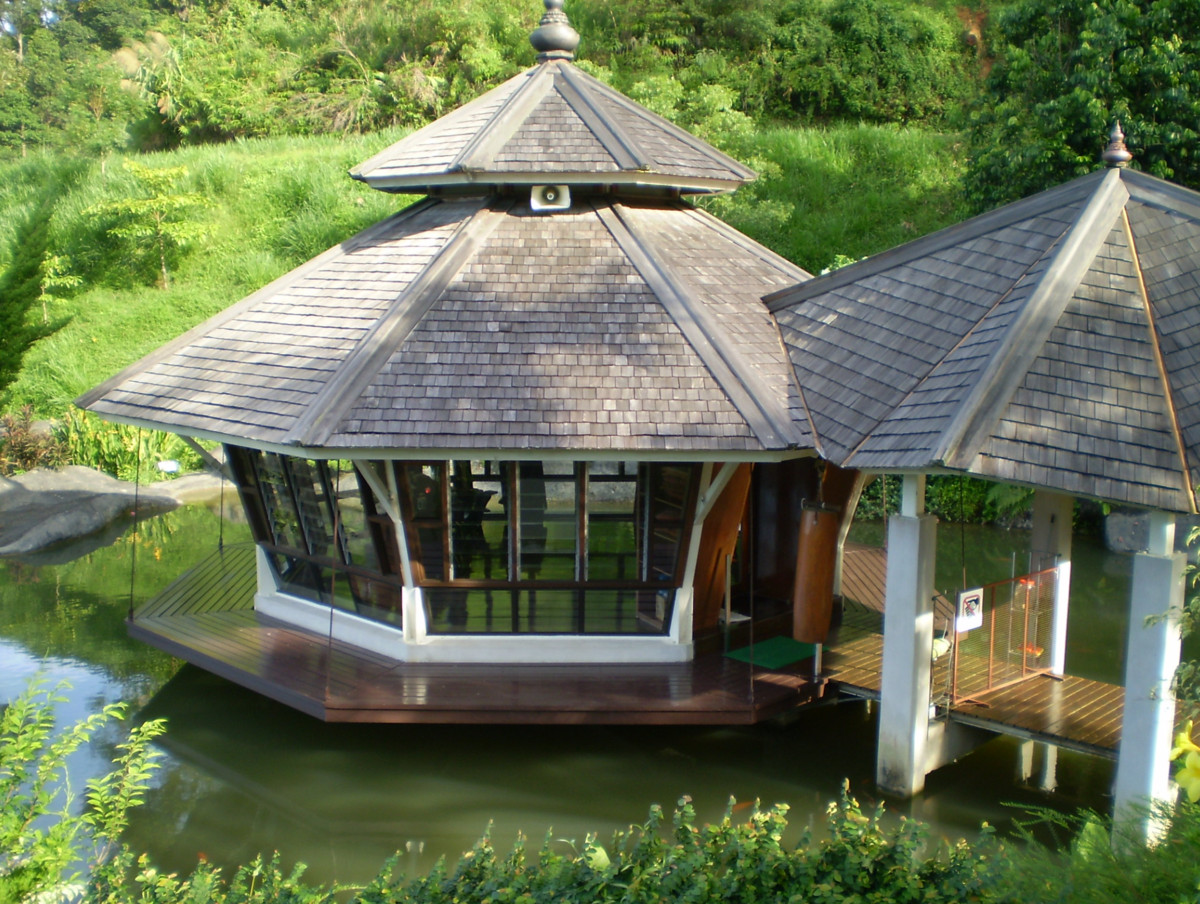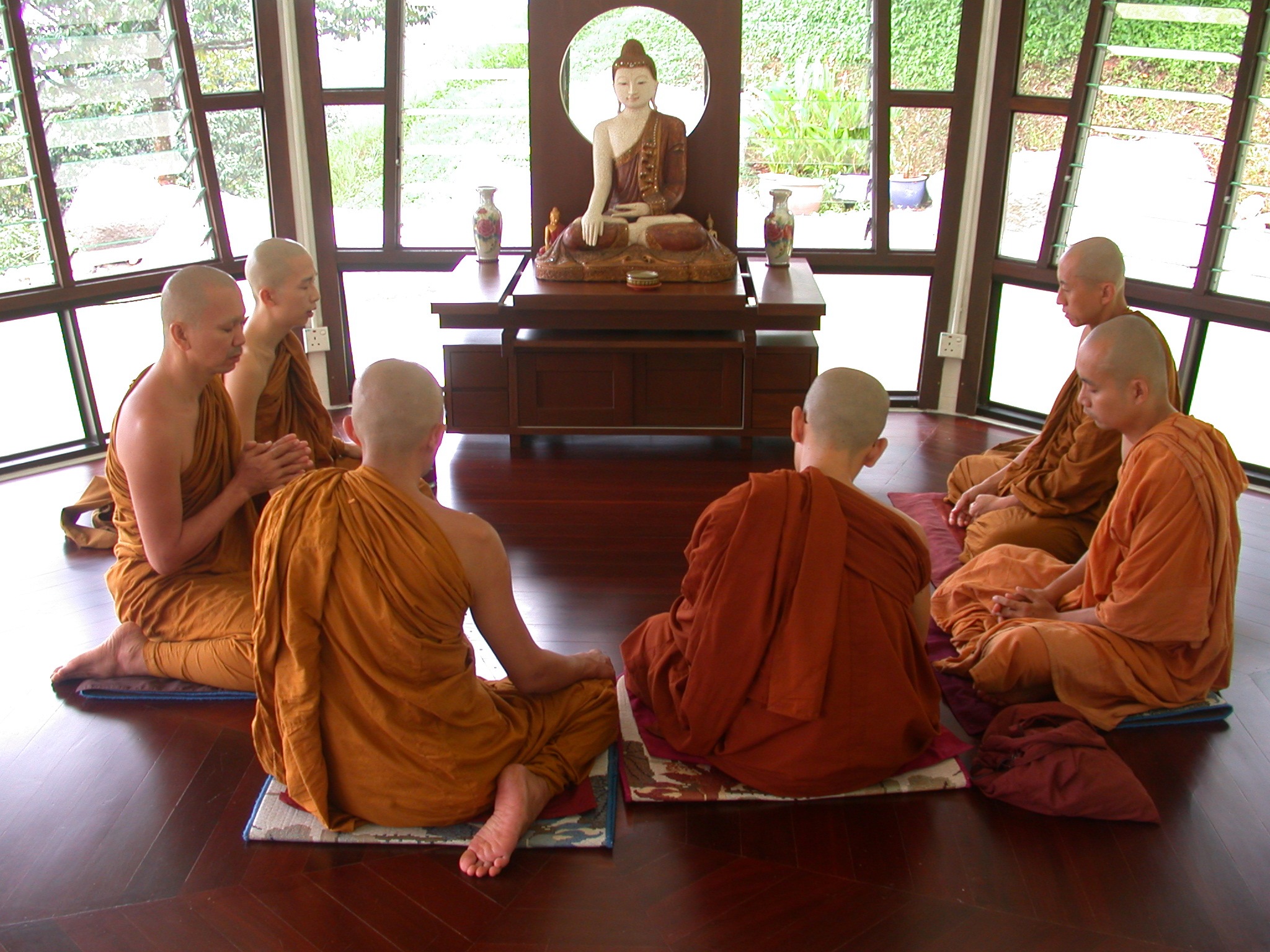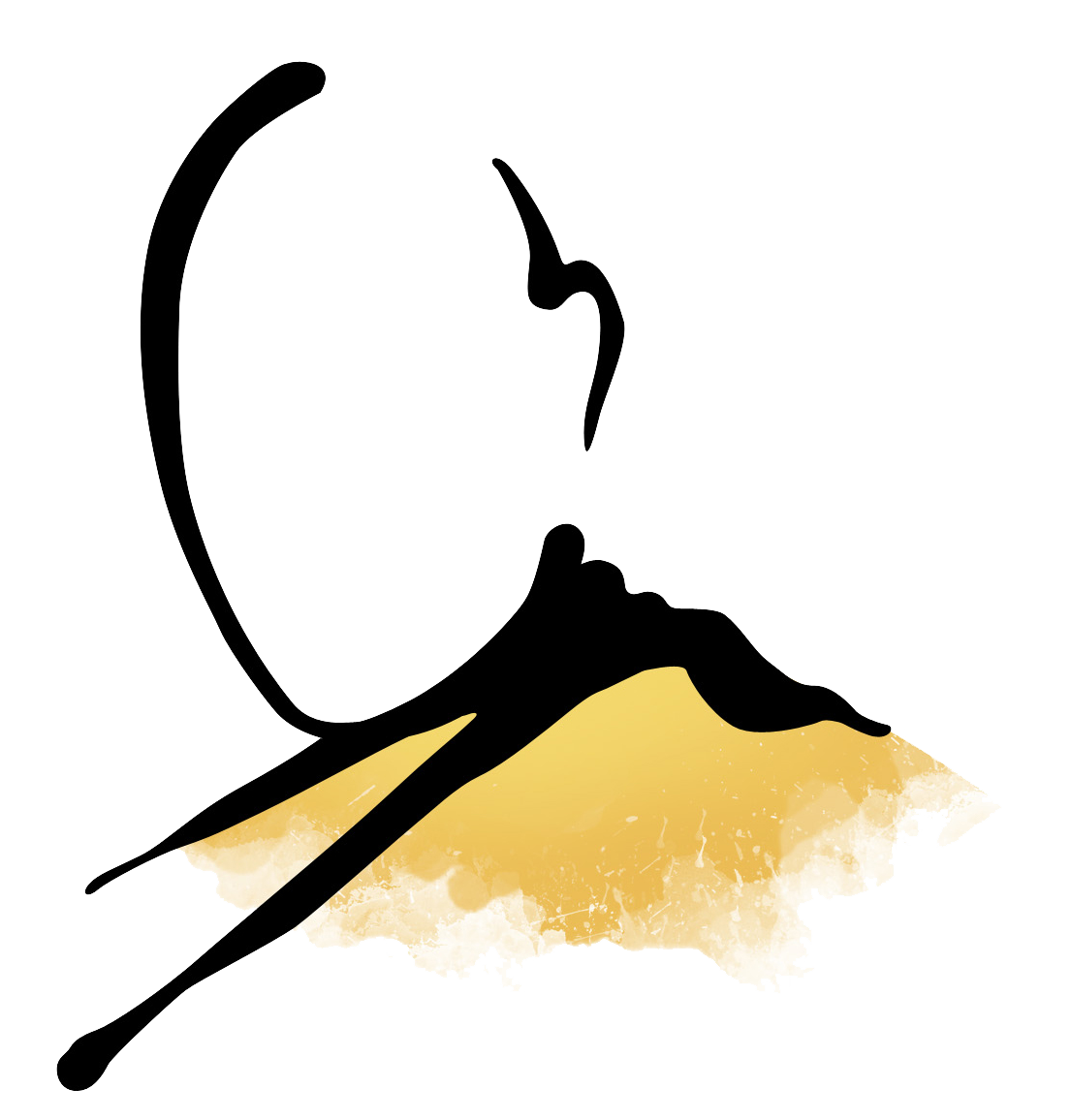Monastery
SBS Monk Training Centre is a Sanctuary for Buddhist monks to deepen their knowledge, understanding and practice of the Buddha’s teachings. We welcome conscientious monks and laymen to experience monastic life, to learn and practise the DhammaVinaya, and grow spiritually towards freedom from suffering.
SBS’ main objective is the provision of high quality training and education of monks. However, as long as lodgings are available, SBS Monk Training Centre also welcomes well-established monastics who simply wish to meditate, or only wish to study the DhammaVinaya on their own, without making use of the training courses described in the “Monk Training” section of this page.
Laymen (yogis) who are thinking about ordination in the near or distant future, and wish to get a first-hand experience of monastic life at SBS, can apply (use contact form below) to stay and practise together with the local community of monks. In this way it is possible to participate in the monastic routine, i.e. meditation, Sutta/Vinaya classes, chanting, chores, almsround (see Daily Schedule), and thereby gain an insider’s perspective of whether the lifestyle at SBS Monk Training Centre is suitable to one’s needs and inclinations. In contrast, a yogi on self- or guided retreat at SBS Retreat Centre, would not have this opportunity.
Requirements for staying or ordaining at SBS Monk Training Centre:
- Interest in meditation
- Interest in the Buddha’s teachings
- Interest in self-development in order to eventually get rid of the sense of self altogether
- Basic mental and physical health
- Fluency in the English language; short-term visitors (up to four weeks) are exempted from this stipulation
- Readiness to abide by the Vinaya as found in the Pāli scriptures (for monks)
- Usage of mobile devices (phones, tablets, laptops) is confined to central facilities (Saṅgha Office, library) and not permitted in the premises of one’s own kuṭi



Since its very inception in 2000, SBS was intended as a place where monks can practice the Dhamma in the most direct manner, without being bound to the cultural influences, practices, and rituals commonly found in present-day Theravāda countries. Furthermore, with the arrival of Bhante Ariyadhammika in 2018, monastic life and training at SBS was broadened and rejuvenated (see ‘Monk Training’ section below). Bhante also initiated the opening up of SBS to foreigners, and ensured that the SBS Management Committee can assist with visa arrangements – thereby making it possible for foreigners to stay and train long term at SBS. Within months of Bhante’s arrival, SBS transformed into a truly international monastery. During vassa 2019 we hosted monks from Australia, Austria, Canada, Czech Republic, Germany, Myanmar, Russia, South Korea, Sri Lanka, Thailand, and USA. In addition to Malaysians and Westerners, Bhante envisions to permanently host monks from each of the three main Theravāda countries (Myanmar, Sri Lanka, Thailand) on a yearly rotation basis, thus enabling fluent exchange of ideas, knowledge, and different approaches to practice. In this way, monks from different backgrounds can learn and benefit from each other and thereby discover or even undo some of their hitherto unquestioned cultural conditioning.
Just as the founder of SBS, Bhante Aggacitta, Bhante Ariyadhammika too regards monastic learning as a lifelong process, and not as something that ends after five years in robes (which only marks the end of the Vinaya requirement to stay with a qualified teacher). Monastic training at SBS has now a much wider scope than what was available here in recent history.
Training courses are provided for monastics who either ordain at SBS Monk Training Centre, or for monks who join our community at a later stage of their monastic career, be it after 5, 10 or 20+ years, who may opt to sign up for some of the courses provided here. SBS Monk Training Centre sets out to foster:
- Meditation theory and practice, which includes experimenting with and gaining proficiency in different meditation techniques which can then be skillfully applied for different purposes, times & situations
- Dhamma knowledge and proper attitude towards the scriptures
- Vinaya knowledge and proper attitude towards the Vinaya
- Abhidhamma knowledge and its scrutiny in the light of Early Buddhism
- Knowledge of important Chants (in Pāli & English)
- Development of practical skills (sewing robes, making brooms, living under a tree, going on thudong)
- Development of research skills with the use of modern technology and specialised software
- The mastery of basic level Pāli, sufficient for research purposes (Advanced Pāli too, in case of individual interest)
- Development of right speech and conversation skills that go beyond mere noble silence (e.g. “Non Violent Communication” workshops)
- Development of verbal & digital presentation skills for giving Dhamma talks
- Development of writing skills for DhammaVinaya essays
- Development of Dhamma sharing skills on a Buddhist blog, newsletter, chatgroup, monastery or personal website
- Development of administrative and leadership skills
- Development in other areas depending on demand and interest of the resident monastics.
Note: Access to the training/courses mentioned from point ten to thirteen is dependent on vassa age and a sufficient foundation in points one to nine.
Bhante Ariyadhammika once summarised his perspective thus:
“Learning and training is a life-long process. I want SBS Monk Training Centre to be a place where even a 5, 10 or 20 vassa monk can come and acquire something of importance for his respective role in the Saṅgha; be it as a Buddhist teacher, leader, and in case he has not yet lost interest, maybe even for his own meditation practice.”
ĀYASMĀ ARIYADHAMMIKA
Saṅghaṇāyaka of SBS Monk Training Centre
Note: In keeping with the Vinaya, important decisions are to be made by the Saṅgha as a whole, rather than by a single monk (i.e. abbot), since no such institution of authority (abbotship) can be found in canonical Vinaya texts. Therefore, the term “abbot”, with its Christian roots and overtones quite alien to the Buddhist monastic context, is not being used at SBS Monk Training Centre. It has been superseded by “Saṅghapariṇāyaka”, a Pāli canonical term (e.g. MN 33) meaning “overall leader of the community of monks”. As a corollary to that, we refer to the monk appointed to act on his behalf, as “Saṅghaṇāyaka” (leader of the community of monks). In addition to giving direction, inspiration, and being a role model for the monastic community, the scope of the Saṅghapariṇāyaka’s duties is defined in the constitution of SBS as follows: a) to formulate, control and administer the curriculum for training, as well as the monastic norms, schedule and routines (katikavatta); done in consultation with the resident bhikkhus; b) to consult the resident monastics, promote their interests, and represent their views in official liaisons with TIMS and other organisations and institutions.
__________
Pāli name: Ariyadhammika
Nationality: Austrian
Ordained: 14.07.2005
Born: 08.05.1976
__________
One of Bhante’s outstanding qualities is his great familiarity with the meditation methods, as well as customs, practices, and interpretations of the DhammaVinaya prevalent in the three main Theravāda countries, having spent five years in Burma, three years in Thailand and three years in Sri Lanka.
read more
Monday – Friday
05:00 – 05:45 Dhamma recitation
06:00 – 06:45 Sitting meditation
07:30 – 09:00 Alms round
09:00 – 09:30 Shower/free time
09:30 – 10:30 Sutta/Vinaya class
10:30 – 11:15 Lunch
11:30 – 12:30 Community service
15:00 – 17:30 Sitting/Walking meditation
17:30 – 18:00 Afternoon drink
18:00 – 19:00 Dhamma studies/practice
19:00 – 19:30 Shower/free time
19:30 – 20:30 Sitting meditation
20:30 Further sitting/walking meditation or individual DhammaVinaya studies
__________
Saturday, Sunday
Individual practice – no schedule
__________
Periodically the schedule is put aside, to allow for adjustments that suit the individual needs of residents. Currently, the community alternates between two weeks of scheduled period, followed by two weeks of unscheduled period during which the schedule is put aside and there are no group activities.
Exemptions to the above are possible, if justifiable under one of the following scenarios:
a) one’s participation in training courses provided by SBS Monk Training Centre
b) one’s duties & functions
c) other reasons approved by the Saṅghapariṇāyaka
A more detailed version of the daily schedule is available for download here.
- Sīmā pavilion (functions as assembly and meditation hall)
- Library
- Dhamma hall
- Saṅgha Office
- Classroom
- Sewing room
- Dyeing shed
- Saṅgha Central Facilities (stores, bathrooms, etc.)
- Kuṭis
- Numerous walking paths and outside meditation platforms
Undeniably, every monastery has its own flavour due to its established Vinaya standards (or sometimes lack thereof), which in turn are usually largely determined by the abbot’s own attitude and interpretation of the Vinaya.
See here for Āyasmā Aggacitta’s approach, summarised by him before the foundation of SBS. A guideline that many years later still remains at the heart of SBS Monk Training Centre:
“Presently, many of our young Malaysian monks have been ordained and trained in foreign Theravāda Buddhist traditions, and it is only to be expected that they will have different views and practices of the Vinaya. For the sake of fraternity and the growth of a harmonious Malaysian Saṅgha founded on a sound scriptural tradition, SBS will adopt the policy of
- Rejecting interpretations and practices of the Vinaya that contradict the scriptural tradition and entail the committing of offences (āpattiyo)
- Discouraging, but at best tolerating, interpretations and practices of the Vinaya that contradict the scriptural tradition but do not entail the committing of offence
- Encouraging contemporary interpretations and practices of the Vinaya that accord with the scriptural tradition but which have been overlooked in established Theravāda Buddhist countries.”
In addition, see here for Āyasmā Ariyadhammika’s approach to Vinaya:
“At SBS Monk Training Centre we host monks from different countries, traditions, and backgrounds. They live, study, and practise the DhammaVinaya together. This necessitates a non-dogmatic approach to the Vinaya, but without throwing out the baby with the bathwater. As a rule of thumb, the rules & regulations as found in the Bhikkhuvibhaṅgha and the Khandhakas are taken as the smallest common denominator, by which every monk at SBS is expected to abide. However, we also support monks who wish to practise according to the commentarial tradition, as long as the type of practice doesn’t contradict the Pāli Canon itself, and they don’t impose their practice on other monks.
In cases where the commentaries are seen to go beyond mere commenting but seem to introduce new rules, it is up to the individual monk whether he regards the commentarial suggestion as authoritative or not. Likewise, when it comes to grey areas even within the Vibhaṅga or Khandhakas, here too an individual monk’s conscientious interpretatation may at times supersede that of the Saṅghaṅāyaka (myself). However, where there is no grey area, every monk is expected to follow the Vibhaṅgha and Khandhakas to the fullest, both in letter and in spirit.
Offences are confessed after making them open in the English language to a fellow monk, followed by formal confession (in Pāli) of the specific offence or class of offence on the very same day. The practices of delayed confession of known offences (once a fortnight), or the ritualistic confession of unknown offences (every day before dawnrise) are discouraged.
An attitude of seeing danger even in the slightest faults (AN 4.12 etc.) is encouraged, while remaining full of love and compassion for other’s and one’s own occasional shortcomings, together with a recognition for a need of further training. This is how strictness and softness can not only coexist, but they fertilise the further development of the mind.”
Personal information about current and past resident monks, and pictures related to monastic activities can be found here.
BECOMING A BHIKKHU
Ordination at SBS comes in three stages:
- A Yogi’s arrival at SBS
- Becoming a Postulant
- Becoming a Bhikkhu
Stage 1: A person aspiring for ordination may come to stay with the Saṅgha and participate in most of the activities of the monastic routine for up to 3 months, thereby gaining a first-hand experience of the lifestyle at SBS Monk Training Centre and seeing if it suits one’s spiritual needs and inclinations. After this initial period and subsequent reflection whether this is truly the way of life one wishes to pursue, and whether SBS is the place where one wishes to spend his initial monastic training period (the first 5 years, intersected with 1 or 2 periods of 6-12 months at other monasteries in Southeast Asia), one can apply to become a postulant at SBS.
Stage 2: The postulancy period is meant as a testing ground for later ordination as a bhikkhu. During this period, one formally undertakes the 10 precepts, and voluntarily/informally can already practice most of the monks’ Vinaya rules. In this way, one learns to adapt to the monastic training rules, community life with its hierarchical structure organized acc. to seniority, as well as learning how to wear (white) robes and eating from a bowl. Before becoming a postulant, it is important to settle one’s financial matters (closing of bank accounts; no more debts or loans), and getting one’s parents’ permission for subsequent ordination as a monk a few months down the line. The duration of postulancy may last anything between 3, 6, 12+ months; individual differences are recognized. The date for ordination as a bhikkhu depends on a combination of 3 factors: a) the candidate’s comfort in robes, and his personal sense of urgency of becoming a monk; b) the mentor’s (upajjhāya) assessment of the candidate’s Dhamma background, basic understanding of the Vinaya, eligibility for ordination, and his personal willingness to take on the candidate as a disciple by giving him the going forth (pabbajjā); c) the resident Saṅgha’s agreement to the candidate’s request for higher ordination (upasampadā).
Stage 3: Canonical Vinaya texts do not mention Sāmaṇerahood as a monitoring or assessment period of adult ordination candidates. Instead, Sāmaṇeras are consistently depicted to be youths who are too young to receive higher ordination (less than 20 years old). The practice of adults living as permanent 10-precept Sāmaṇeras in order to obtain (usually) equal status and material support from the lay community as fully ordained monks, but without wanting to undertake the training rules of a bhikkhu, is also not found in canonical Vinaya literature. For these reasons, at SBS we do not require ordination candidates to undergo a Sāmaṇera period prior to ordination. This is what the postulancy period is meant for, while maintaining a clearly visible distinction between who is already a monk (brown robes), and who is a candidate for ordination (white robes). Finally, on the actual ordination day the going forth (pabbajjā) is given by the preceptor (upajjhāya) first, followed by acceptance (upasampadā) given by the Saṅgha.
A WORD ON TEMPORARY ORDINATIONS
As both monkhood and monastic training are highly valued at SBS Monk Training Centre, much support is given to ordination candidates and newly ordained monks alike. This requires not only time and help from one’s mentor (upajjhāya), but at times from the entire community. For all the support to be worthwhile and of long-lasting benefit, and to not overly burden the resident Saṅgha with frequent ordinations and disrobals, we do not give temporary ordinations at SBS, i.e. ordination with the fixed plan to disrobe after a week, month, year etc. Of course, this does not mean that one cannot disrobe under any circumstances, but it means that at the time of ordination there should be an aspiration to remain as a monk for the rest of one’s life; unless unforeseen irresolvable issues arise that may cause one to change one’s mind and return to lay-life. If you are looking for a place to take temporary ordination, you may consider contacting Brahmavihara Monastery (Malacca), MBMC (Penang), or Buddhist Maha Vihara (KL).

